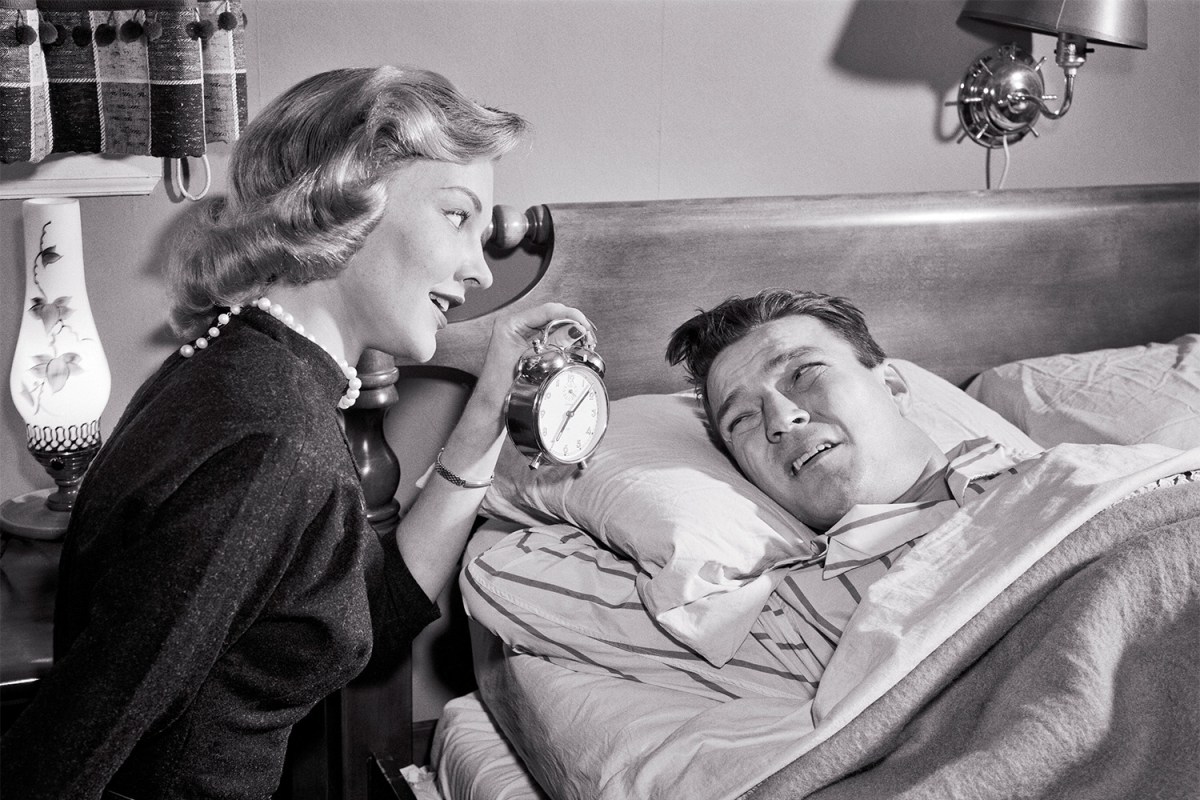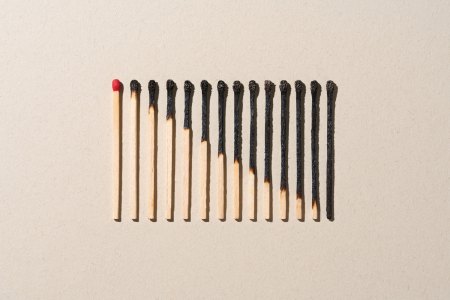When the father of a friend of mine first found out about sleep divorce, he had two reactions. First: genuine, interested shock that such a thing existed — that each half of a couple could choose to sleep in separate beds, or separate rooms, to guarantee each of them a better night’s sleep.
Decades of insomnia, he must’ve pondered, able to be whisked away, just like that. No more fighting over the covers or the thermostat. No more coordinating bedtimes or fretting over asymmetrical alarm times. No more waking up when the other’s nocturia was kicking up, nor accommodating whatever oddball rituals had emerged over the years (whether unacknowledged, or, at the very least, un-agreed upon), from letting the dog up on the pillows, to letting the other half keep a reading light on into the wee hours.
His second reaction, though, was decidedly less conjectural, as if his libelous thoughts had come to a screeching and conclusive halt: “I will never sleep in a different room than your mother.” Case closed. This discussion never happened.
The Dawn of Sleep Divorce
Fair enough — both reactions make sense in context, especially the latter one. Married couples have long ascribed special importance to sleeping arrangements. As relationship expert Susan Winter previously shared with us: “[We used to] assume that couples who slept apart were either having relationship issues or had lost the desire to be intimate.”
To sleep in a different room or bed, from this framing, is to punt one of your relationship’s oldest and purest vestiges of intimacy. It’s officially giving up, a form of divorce. It might not help that those singing its praises seem to have no issue with the comparison (considering the movement is literally called “sleep divorce”). Publications — including this one, which once ran the headline “Sleep Divorce Is Carson Daly’s Key to Marriage Success” — have latched onto the idea and breathlessly written about it as if sharing a secret.
For the most wizened couples, those still doing yeoman’s work in the bedroom — turning the lights off and hoping for the best — you could see it being easier to block out all this noise. Why rock the boat, after all these years? Why cause the sort of unnecessary pain that can’t be completely or cleanly rationalized by sending links to wellness articles? They may also value the Esther Perel-esque domestic eroticism of continuing to sleep in an enclosed space, no matter the sabotage it might inflict on their sleep.
The curiosity lingers and proliferates, though. Figures suggest that one in four married couples now sleep separately. Sleep experts continually endorse the idea. Young people are into it. We live in an age of hyper-focused sleep monitoring, with index-finger wearables and firm side-sleeper pillows and brown-noise machines. Too many of us are too aware of our sleep (of what works and what doesn’t) to not know if sleeping with a partner complicates the pursuit of a successful eight-hour sleep cycle.
How “Sleep Minimums” Quietly Steal Years From Our Lives
You may think you can get by on just a few hours of shut-eye, but you’re doing more harm than good.My Bedtime Story
Early last year, I began wrestling with an idea that felt both extremely silly and serious. Was it possible to sleep-divorce someone I’d only just started dating?
At various points in my life, I’ve fretted about my sleep to the point of acute insomnolent episodes. On nights before big tests or early flights, I’d sometimes lay there for hours, hacking away at the maw of my overactive mind, feeling hopeless to my nightstand iPhone’s sneering march of time. Sometimes the arrangement would visit me on less eventful occasions, like a simple Sunday night. I became steadily suspicious of sleep, and felt simultaneously clueless regarding the times it did work perfectly — those occasions on which I seemed to unconsciously press an off button, then wake up mere “moments” later, refreshed, to the sunlight charging through my slats.
Many of these experiences preceded my career in lifestyle writing (I can remember failing to fall asleep a few times all the way back in high school, math exams almost certainly looming). The more I’ve written about wellness, though, the more I’ve naturally adopted the variety of techniques (or “hacks”) I’ve come across in the space, essentially arming myself against the prospect of another sleepless night with an insomnia-fighting protocol.
I stop drinking water two hours before bed, and caffeine 12 hours before. The bedroom needs to be under 70°F, at the very least, and colder still in summer. I play brown noise and wear loose-fitting boxers and read several pages of a sepia-backlit Kindle and sport a blackout mask. I exercise within an hour of waking up — generally at least three miles of running on the roads, followed by a lift at the gym — and take great pains to avoid stepping on or sitting atop the bed for the entirety of the waking day, lest I flout the sacred rites I’ve learned about sleep hygiene.
After writing all of that out, I’m aware that my sleep needs lean rigorous and privileged, and a little bit selfish. But I’m also convinced that they work, and have long felt more or less unwilling to compromise on them. These strategies have been considered, tested, fine-tuned. They’re how I get that off button back, how I nab the eight hours I need to do The Big Thing tomorrow, how I make sure I’m doing more than just hoping for the best when I turn off the lights.
It’s Complicated
That’s all true. So is this: I’m a near-30-year-old man in a happy and committed long-term relationship, who’s recently moved in with his girlfriend.
Aside from vivid nightmares (she’s good for one of those a week), my girlfriend doesn’t fret sleep the way I do — if anything, it seems to be my obsession with my sleep that occasionally makes her anxious about her own. She’ll worry to herself: If I wake up in the night — if I toss and turn, or hit the bathroom, or anything — will that interfere with the sleep routine he’s put so much thought and effort into? Will he be gentle about this? Or a jerk? Will he roll over back to sleep? Or lay there fuming?
To protect our privacy, and your sanity, I won’t go into the many experiences and discussions we’ve had orbiting concepts of sleep optimization, personal sacrifice and family planning (one day in the not-so-distant future, as she has rightfully pointed out, a full night’s sleep will no longer be on the menu). But I can say that these conversations have focused as much on intimacy as insomnia.
It’s important to her for us to sleep in the same room, to end one day and start the next one right next to each other. She’s granted my more podcast-y arguments against this; I like to point out that sleep is just sleep — a necessary, imperative and solitary biological function — and that if we don’t get it properly, we’re more likely to be moody or distracted in the morning, when the actual living happens. But, at the same time, she doesn’t want a “sleep divorce” within the first two years of our relationship. And truthfully, neither do I. Even with all the research, and my personal history, I don’t want that fact on our relationship resume. I like the intimacy of sharing a bed. I just wish I were better at it.
Besides, we live in Brooklyn. Square footage is too valuable to start converting extra rooms (if you’re lucky enough to have one) into official second bedrooms.
Is Taping Your Mouth Shut a Legit Hack for Better Sleep?
How nasal breathing relates to snoring, sickness and athletic performanceOpen the Checkbook
If you’d believe the well-oiled machines of e-commerce journalism, Instagram-influencing and roadside billboards, almost every single wellness “issue” on the planet is simply waiting to be solved by the right product. Having tried so many supplements and gizmos in the health space, though, I’ve settled on only a handful of goods and services that I believe will tangibly and sustainably impact your wellness: quality food, a good pair of walking and/or running shoes, a reliable fitness-related subscription (to a gym, studio, team, app or class-entry service) and a proper bed.
I feel most passionate about the last one. We all spend too much money on too much stuff that doesn’t matter — or stuff that doesn’t actually “do” anything, in a health context — to not spend a respectable sum on assembling a bed that makes sense for you, one which perhaps even fills you with confidence, pride and joy.
This applies to single sleepers, but it’s even more important for couples; when you start sharing a bed with someone, it’s critical for each individual to break down their sleep needs, habits and expectations (e.g., whether your back prefers a soft or firm mattress), then act on them together. There’s a difference between finding compromise and completely holding your tongue (such as: apathetically deferring to whichever mattress seems “nicer” from the before times, when you were both single). If either of you lets the latter happen, un-uttered resentment could fester. Plus, your sleep will suck.
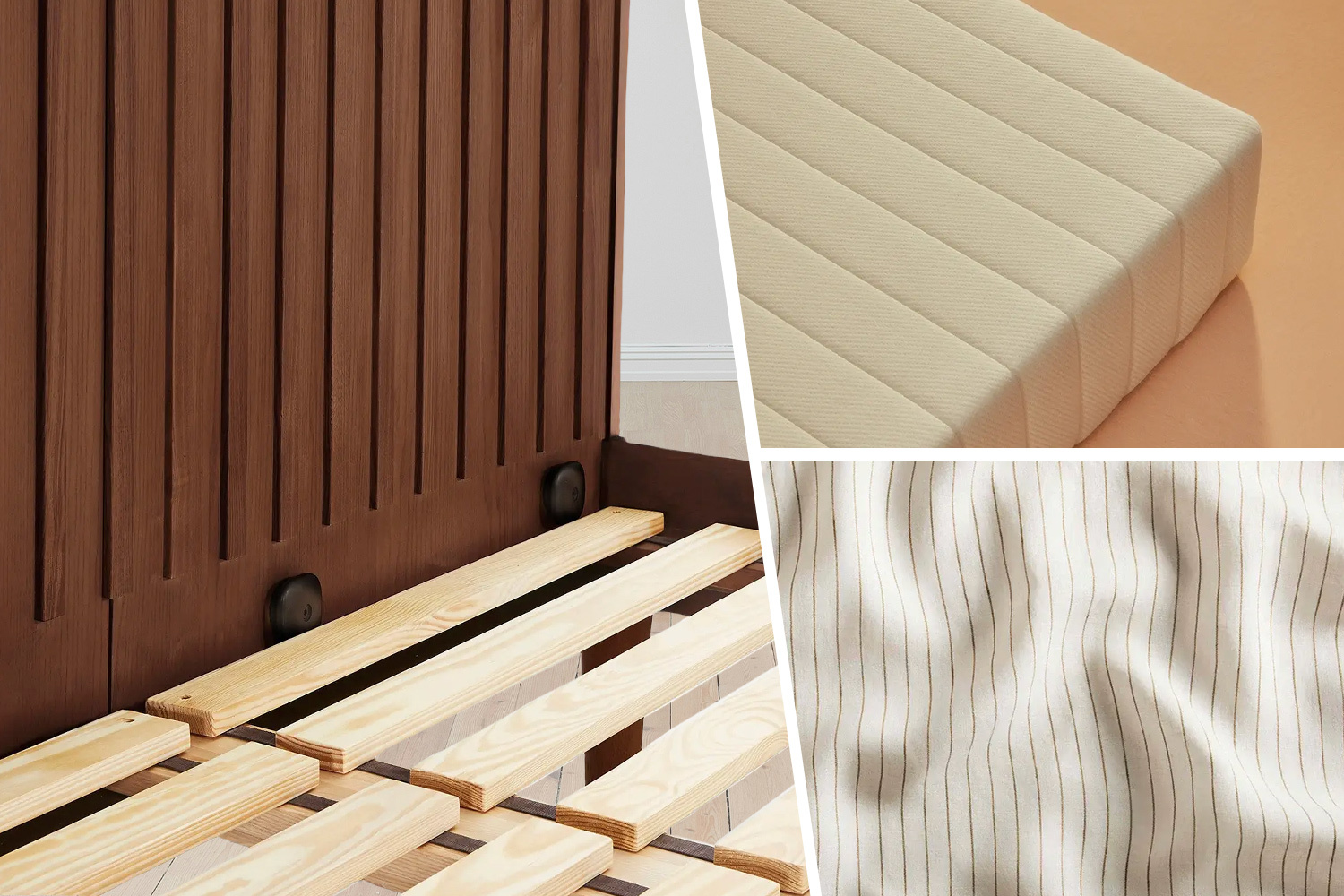
A Solution Fit for a King
Before my girlfriend and I moved in together, back when I would stay the night at her place, we’d practice the “Scandinavian sleep method.” It calls for dressing with the bed with separate comforters. (Or top sheets, or covers, or whatever you want to call them.) The practice, popular in Denmark, Norway and Sweden, eliminates most couples’ most contentious nighttime trigger: the scramble for duvet domination. And it was a nice stopgap for us, to be sure.
But for our ultimate long-term solution, we landed on the “split king” setup. If you’re not familiar, it involves slotting two twin XL mattresses into a king-sized bed frame. After lots of thinking about this topic, I’ve decided the split king is the most efficient midway between sleeping on top of each other and having to sleep across the hallway.
Why does it work? Well, it’s sort of the turbo version of the Scandinavian method. Each sleeper has their own sheets and comforter — and also essentially has their own bed. Assuming it’s a good, heavy bed, there’s little chance one partner is going to absorb the sensation of the other’s rustling around. Also, while some king beds sink to the middle, pushing partners close to each other, the twin XLs would only do so (if they sink towards the middle at all) within their own boundaries.
In other words, it puts each partner on their own planet, but within the same solar system. It’s a more affectionate setup than a romantic one, and almost comically big — in our apartment, a king-sized bed is huge, and we laughed, nervously, the first time we used it. But while the bed takes up more floorboards, the arrangement offers the legs a revelatory amount of a room to stretch out in the night, whether pointing forward or penduluming laterally. (As a 6’3″ man, a twin XL mattress is plenty.)
The split king also allows for other preferences to take form. It’s large enough that a fan or sound machine, oriented on one side, may not impact a sleeper less interested in such things on the other. This fact applies to more traditional bed layouts, of course, but it feels all the more potent in a bed where each has their own mattress to work with, too. To that point, a couple might choose to purchase two completely different mattresses, for different sleeping experiences. (So long as the height isn’t an egregious mismatch.) As for how the split king presents in daylight hours? It’s easy to drape a quilt over the whole operation. Nothing to see here.
In order to assemble our split king, we sourced from some real heavy-hitters in the sleep space. Namely, Burrow (for the bed frame and headboard), Earthfoam (for the mattresses) and Brooklinen (for the linen sheets to tie it all together). I won’t go so far as to say the split king is a guaranteed solve against sleep divorce, or even that it has to be. For some couples, sleep divorce may well be the correct endgame. (A split king, for instance, can’t solve a chronic snoring issue.)
But in the interest of creating a bit more space in the bedroom, and cultivating a lot more conviction heading into each sleep, the split king is the very best solution I can think of. Below, the pieces that comprise our happy new whole, with some words on why they’re worth your next paycheck.
Nota bene: If you buy through the links in this article, we may earn a small share of the profits.
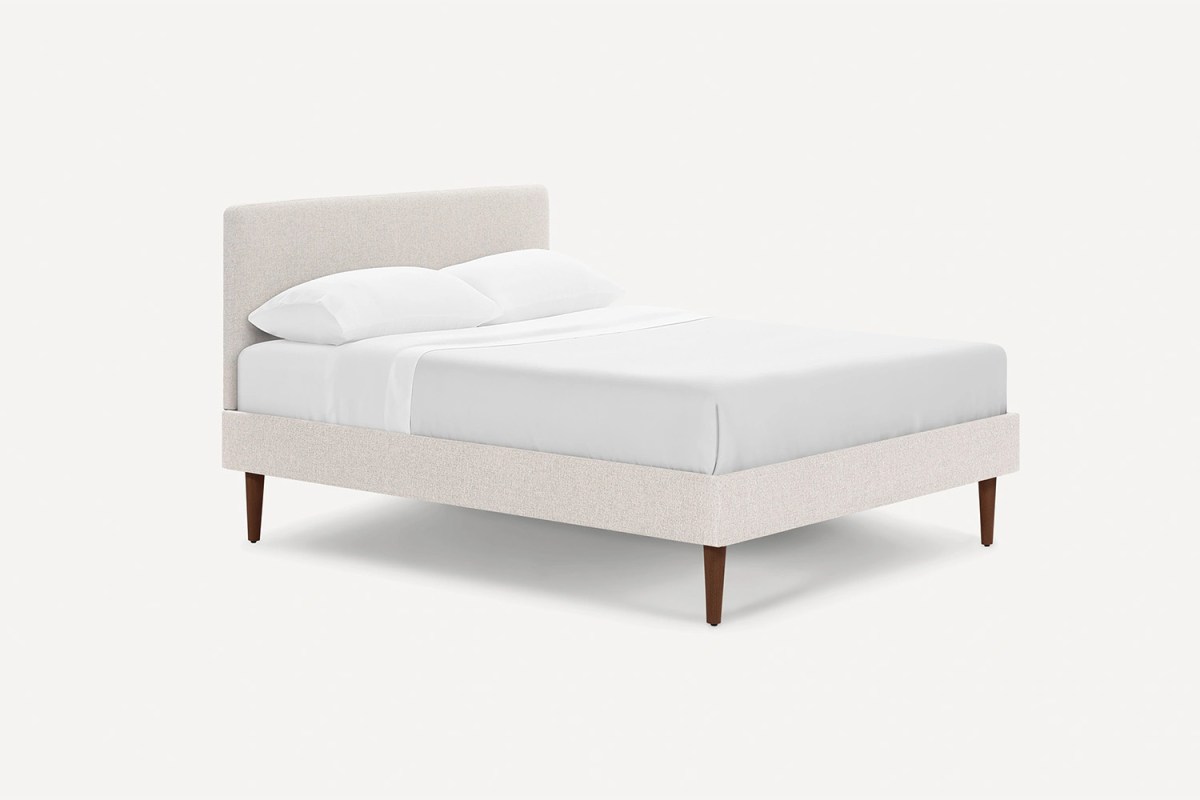
Burrow Chorus Bed
Our original criteria for a split king bedframe was on the proverbial floor. The piece just needed to fit both twin XL mattresses. (No guarantees there: some king-sized frames don’t have a handy lip surrounding the base of the platform, meaning the mattresses might be liable to slip off.) There’s no such issue with Burrow’s Chorus Bed, which not only capably fits both beds, but also is offered in a gorgeous walnut base that wouldn’t dream of creaking. There’s a sick irony that the cheapest beds tend to have the most wonky parts and longest assembly instructions, but setup was easy here, thanks to “Japanese-inspired joinery.” In other words, everything slotted in easily and the bed quickly looked as lovely as it does in the photos online. Oh, and we got the fabric headboard in papyrus. It allows for non-sleeping, intimate moments in the split king setup (e.g., reading next to each other). This is a bed to build a life around.
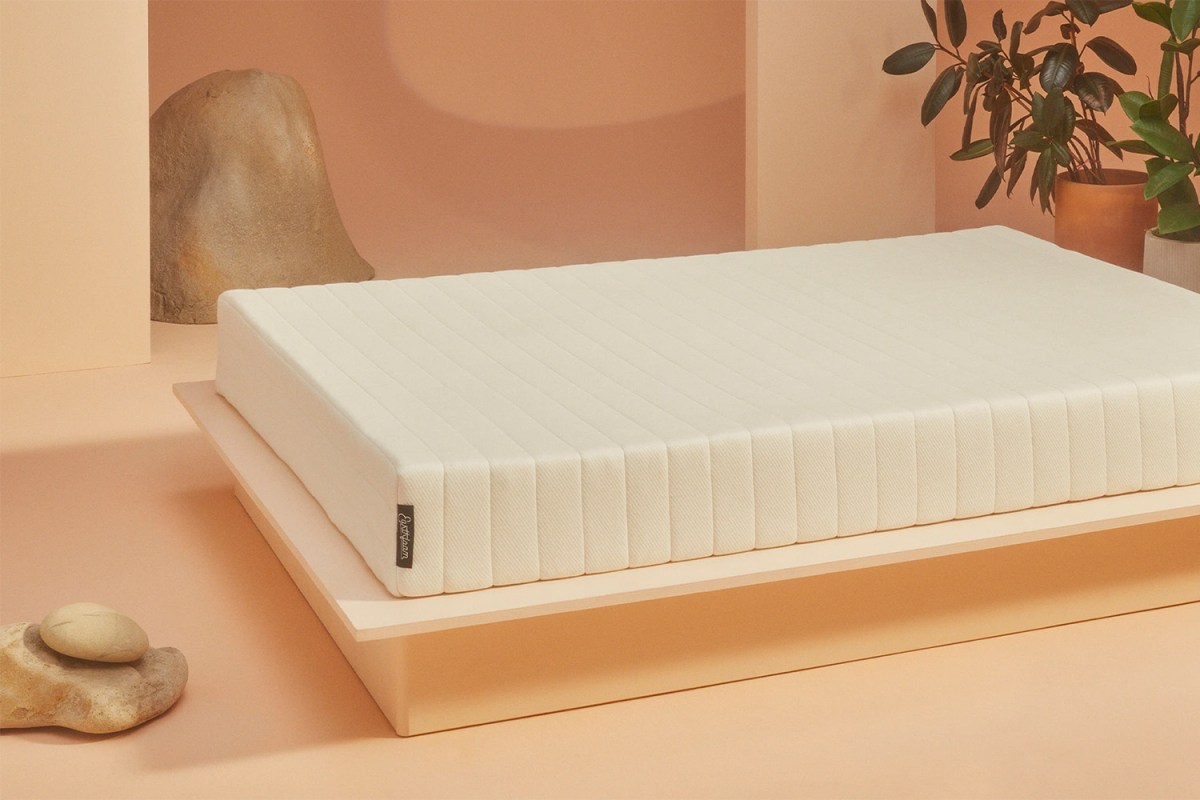
Earthfoam Mattress
The internet loves these mattresses — and for good reason. Constructed from five different layers of plush support (including organic rubber from Sri Lankan farmers and organic wool from New Zealand sheep), Earthfoam’s mattress is heavy. Lugging two twin XLs up a fourth-floor walk-up was hell on my knees, but it was a fair price to pay for a half-decade, at least, of stock-still sleep. The added weight is there to help the mattress absorb movement. In practice, with a split king setup, this means you can barely register your own tosses and turns, let alone those of your partner. I absolutely love the thing. If it’s too firm for you, add a mattress topper.
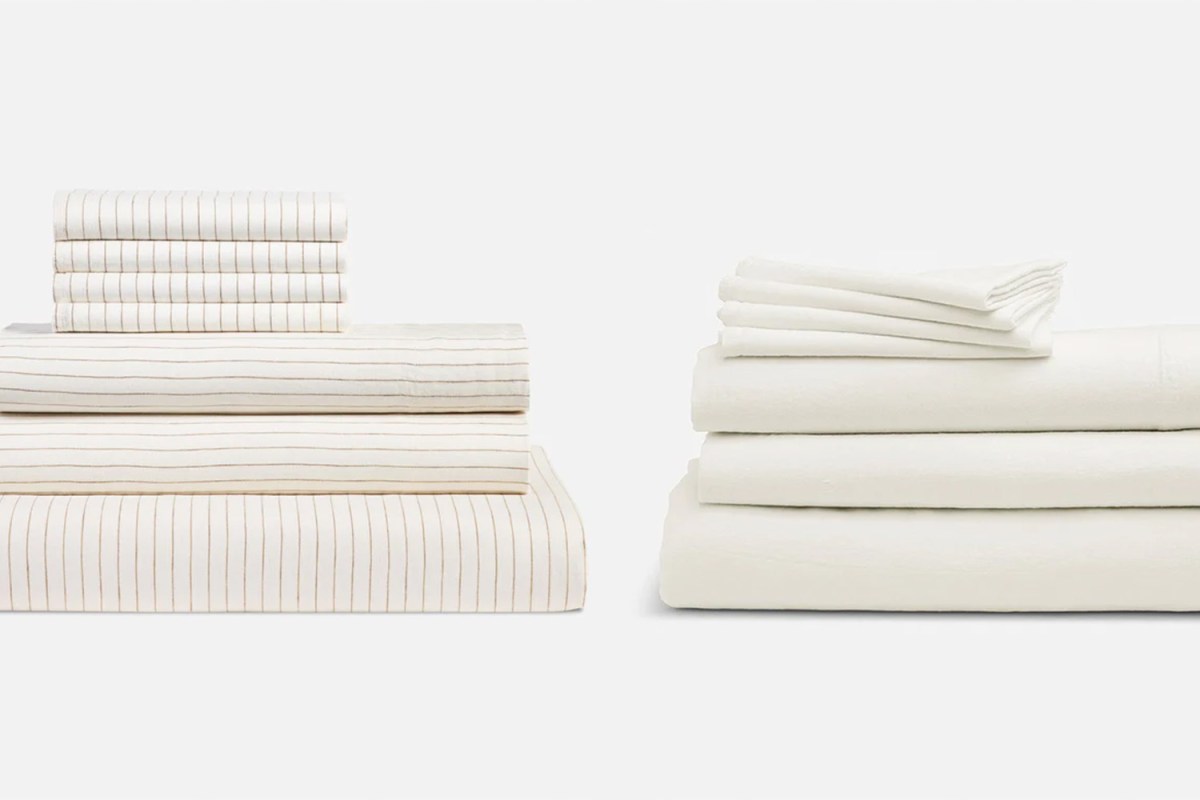
Brooklinen Washed Linen Hardcore Sheet Bundle
Linen sheets go hard. Brooklinen’s are an excellent idea for anyone with a bed, but the fabric is especially applicable for couples, who may have different core temperatures/nighttime needs. I run hot, my girlfriend cold, but, as others have pointed out before me, linen makes this easy. It’s a master of thermoregulation. If you’re going to the lengths of a split king setup, get yourself sheets that breathe, that offer each sleeper a shot at comfort. Brooklinen’s bundle is stonewashed, 100% European Flax. We got them in the cream color. A few days after our first sleep in the set, we were at a hotel on a wellness retreat…and already pined for our new sheets at home.
The Charge will help you move better, think clearer and stay in the game longer. Subscribe to our wellness newsletter today.
